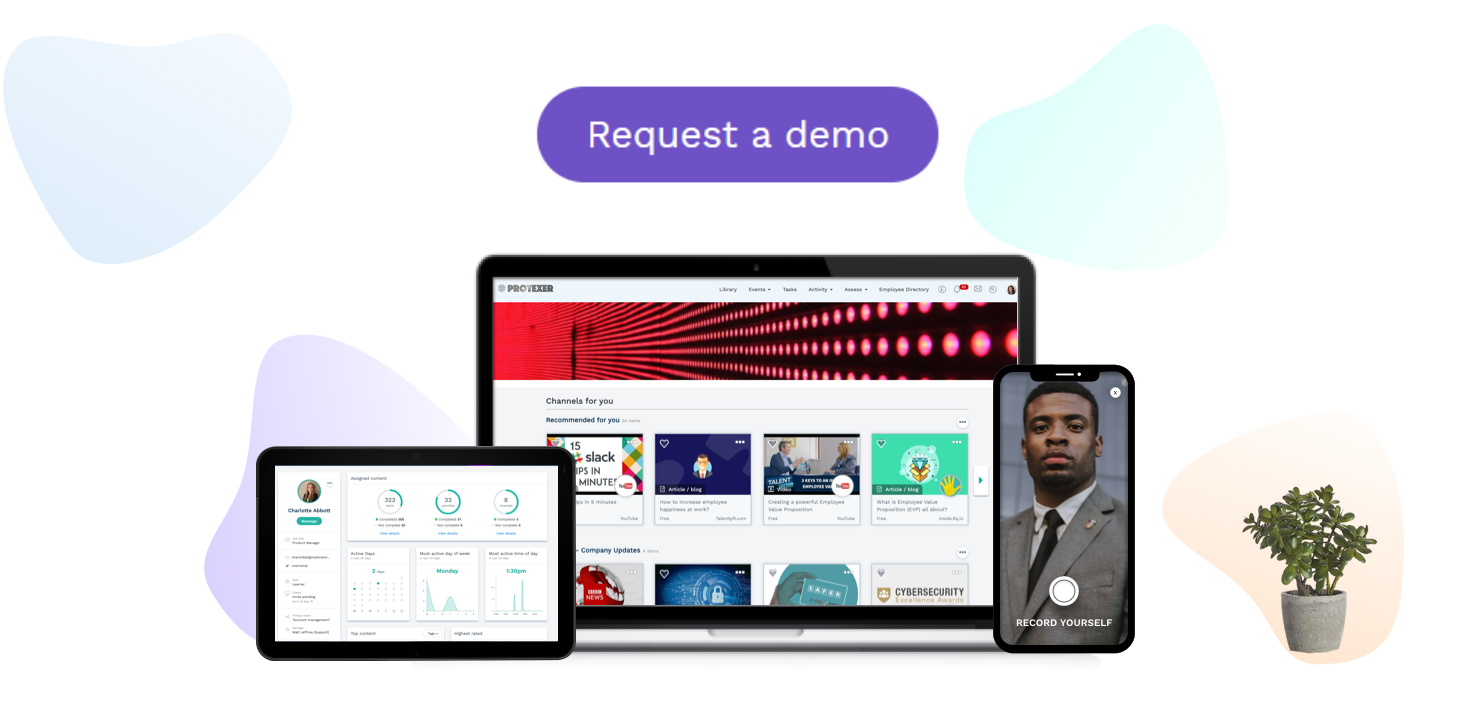When some employees are working from home, others are in the office, and some are bouncing between the two, it can be difficult to make everyone feel like part of the same team, especially new hires. Luckily, a great onboarding program and the right digital tools can make a huge difference.
Onboarding isn’t just a great way to help your new hires hit the ground running . It can also be the key to helping new joiners feel like a part of the team. In fact, a strong onboarding program can increase new employees’ sense of belonging by 70%[1] - especially important when you’re working in a hybrid team.
For more detailed advice on helping new hires feel like part of the team, click here to download our best practice guide, “Onboarding and induction: How to win employee loyalty from Day 1.”
Here are a few ways to set up your onboarding program so that every new hire feels like part of the team, wherever they happen to work:
- Include a buddy system
Microsoft[2] tested the impact of a buddy system in their employee onboarding program and found conclusive results. Employees were provided with an “onboarding buddy,” who was available to answer questions, provide peer support and guide the new recruit towards internal experts or key stakeholders.
Recruits with a buddy reported that they felt 97% more productive within the first 90 days than those without. They were also 23% more satisfied with the overall onboarding experience, and more aware of cultural norms and relationships.
For hybrid companies , where team unity and channels of communication can be a challenge, a buddy can make sure that every new hire feels supported, included and welcomed. To create consistency, we suggest that all buddies set up regular video calls rather than in person meetings, even if both parties work in the office.
- Create an internal coaching program
Some managers worry that new hires will not receive enough opportunities for in-person mentoring or on-the-job learning in a hybrid- remote environment[3]. However, a remote-friendly internal coaching program can make sure that everyone can find the support and advice they need.
To help employees find the right person to advise on a given work challenge, consider transforming your employee directory into a “LinkedIn” style platform which highlights the skills and areas of expertise of every employee.
Make sure that new hires and existing employees see coaching and peer mentorship as a fundamental part of the company culture. To encourage internal coaching, you could consider adding coaching or peer support performance metrics to your performance management system.
With a tool like Learn Amp, employees can also upload short bios and add tags to indicate key knowledge areas (think “designing presentations” or “advanced CRM reporting”) so that everyone can easily find and contact the right person for help. That way, remote and in-house employees have equal access to peer mentorship and support.
- Add the personal touch
While much of the onboarding and induction program needs to be standardised and consistent, adding a human touch to the process can be extremely effective. For instance, schedule a team meeting to welcome each new recruit. Send a gift basket or personalised company merch to your new hires, no matter where they work.
Encourage line managers to schedule a one-to-one with every new hire within the first week, as well as regular informal check-ins by instant messenger - again, keeping these all remote will help maintain a level playing field for remote workers.
For more best practice suggestions for building an engaging onboarding program, check out our new guide, “Onboarding and induction: How to win employee loyalty from Day 1.”
Resources:
[1] https://www.octanner.com/insights/articles/2018/9/14/_2018_global_culture.html
[2] https://hbr.org/2019/06/every-new-employee-needs-an-onboarding-buddy
[3] https://www.bbc.com/worklife/article/20200824-why-the-future-of-work-might-be-hybrid





